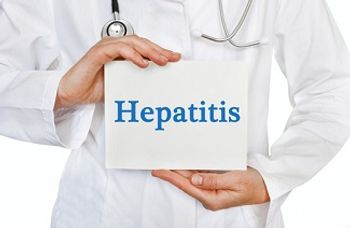
New Bacterial Vaginosis Screening Recommendations for Pregnant Women
The USPSTF commissioned a review on the impact of asymptomatic bacterial vaginosis screening and treatment on pregnant women with respect to preterm birth.
The prevalence of bacterial vaginosis among pregnant women in the US ranges from 5.8% to 19.3%. The condition is caused by disruption of the microbiome in the lower genital tract. During pregnancy it can be associated with preterm delivery, early miscarriage, low birth weight, and postpartum endometriosis.
However, there are has been a lack of comprehensive reviews on the impact of screening or treating asymptomatic pregnant women for bacterial vaginosis. Treatment with antibiotics may be beneficial but can lead to adverse effects such as vaginal candidiasis.
The US Preventative Services Task Force (USPSTF) commissioned a review of evidence on the accuracy, benefits, and harms of screening for or treatment of bacterial vaginosis in asymptomatic pregnant women. This review is an update to a 2008 recommendation and was published in
The investigators of the review examined 25 cross-sectional studies on accuracy of available bacterial vaginosis tests, 13 randomized clinical trials on the effect of treatment of asymptomatic bacterial vaginosis in pregnant women on preterm delivery, 5 trials reporting outcomes for women at risk of preterm delivery due to prior preterm delivery, as well as 14 studies and meta-analyses that reported on potential harm of treating asymptomatic bacterial vaginosis.
The USPSTF concluded based on the review with “moderate certainty” that screening for asymptomatic bacterial vaginosis in pregnant women not at increased risk of preterm delivery has not shown net benefit in preventing preterm deliveries.
Conversely, the USPSTF concluded that for individuals at risk of preterm delivery, the evidence is more conflicting, and that the balance of benefit and harm cannot yet be determined.
The pooled accuracy of the BD Affirm VPIII test was 0.87 (95% CI, 0.80—0.92) and sensitivity was 0.81 (95% CI, 0.73-0.88).
In a study on the accuracy of the BD Max system, sensitivity was 0.93 (95% CI, 0.91—0.94) and specificity was 0.92 (95% CI, 0.90–0.94
The sensitivity of the OSOM BVBLUE ranged from 0.61 to 0.92. Specificity ranged from 0.86 to 0.99.
Clinical trials on the treatment of asymptomatic bacterial vaginosis did not appear to show impact on preterm delivery. No statistically significant reduction was found in preterm delivery prior to 37 weeks in the studies.
In the subset of trials concerning treatment of asymptomatic bacterial vaginosis in women with prior history of preterm birth, 3 studies had statistically significant findings favoring treatment, while 1 did not.
Trials on potential harm of treatment indicated what the authors refer to as minor adverse effects. Adverse effects included discharge and study withdrawal because of itching. There were no reported fetal harms in the literature.
Ultimately, an outcome of preterm delivery is likely multiply determined rather than being causes by one factor. The exact biological mechanisms of this process are not well understood. While asymptomatic bacterial vaginosis may lead to risk for preterm delivery, the cause of this possible correlation is not clear.
“Although the evidence is clear that treating asymptomatic bacterial vaginosis in pregnant persons not at increased risk for preterm delivery does not prevent preterm delivery, it is still unclear whether treating asymptomatic pregnant persons at increased risk for preterm delivery may help prevent preterm delivery,” the USPSTF wrote.
The USPSTF decided to recommend against screening for bacterial vaginosis in pregnant people not at risk for preterm delivery, though maintains that current evidence is insufficient among people with increased risk.
Newsletter
Stay ahead of emerging infectious disease threats with expert insights and breaking research. Subscribe now to get updates delivered straight to your inbox.

















































































































































































































































































